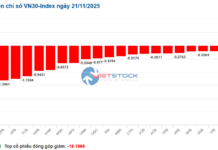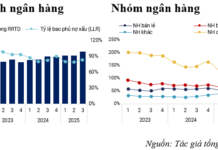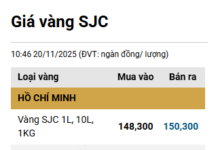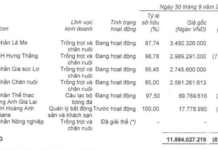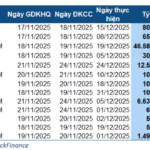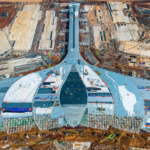Special Mechanisms Needed to Sustain Leading Enterprises
At the “State-Owned Enterprises Enhancing Competitiveness and Leadership Role” forum on November 20, Ms. Hà Thị Thu Hằng, Deputy Head of Planning and Development at Vietnam Airlines, emphasized the airline’s pioneering and leading role in Vietnam’s aviation market.
According to Ms. Hằng, the airline’s market share reached 46% last year, surpassing the previously reported 42%, solidifying its market leadership. “Our goal is to maintain this leadership, expand international routes, and connect Vietnam globally,” she stated.

Ms. Hà Thị Thu Hằng, Deputy Head of Planning and Development at Vietnam Airlines.
Ms. Hằng also mentioned Vietnam Airlines’ partnership with SkyTeam, operating over 80 international routes and offering thousands of destinations. She highlighted aviation’s significance to Vietnam’s economy, projecting hundreds of thousands of jobs in 2024, substantial GDP contributions, and tourism growth, with 80% of international visitors arriving by air.
However, she noted challenges in state management mechanisms. Despite increased autonomy under the Law on State-Owned Enterprises (Article 68), Vietnam Airlines faces difficulties in executing major projects, particularly aircraft investments, due to complex capital approval processes and divisions between overseeing agencies (Ministry of Finance and SCIC). For instance, a plan to purchase 50 narrow-body aircraft was delayed for years due to bureaucratic procedures, only progressing with government intervention.
Ms. Hằng also addressed ESG (Environmental, Social, Governance) challenges, especially for international flights, where Vietnam Airlines must offset carbon emissions per international regulations but lacks domestic guidance or support.
“I urge the government to implement special mechanisms for the aviation sector, tailored to its high-investment, high-risk nature, enabling Vietnam Airlines to sustain its market leadership, enhance global competitiveness, and fulfill digital transformation and ESG commitments,” she said.
What Do Accelerating Enterprises Need?
Mr. Nguyễn Đình Tuấn, Deputy General Director of Mobifone, stressed that technology enterprises face unique challenges, particularly the need for rapid decision-making in a fast-evolving technological landscape.
Mr. Tuấn outlined Mobifone’s evolution through various organizational models, from business partnerships to state capital management under the Ministry of Information and Communications, and now under the Ministry of Public Security.

Mr. Nguyễn Đình Tuấn, Deputy General Director of Mobifone.
He emphasized that in technology, speed is critical. Investments in new technologies like AI and 5G/6G require near-instant decisions. Unlike manufacturing or energy sectors, technology enterprises often derive value from ideas and managerial vision. He proposed mechanisms allowing leaders to take responsibility and make swift decisions.
Facing double-digit growth targets, Mr. Tuấn asserted that enterprises must drive this growth. While the government has strongly embraced digital transformation, enterprises must also accelerate to meet shared goals.
“With traditional telecom revenues declining, Mobifone aims for non-telecom services to account for 50% of revenue in the next five years, a pressure that demands innovation,” he shared.
State-Owned Enterprises Confront Six Major Challenges
State-owned enterprises are grappling with significant challenges, including an unclear leadership role, limited ability to create value chains and forge partnerships with the private sector, and untapped capital and asset potential due to restrictive legal frameworks. Their proactive stance and competitiveness remain low, with many business decisions delayed by lengthy approval processes, hindering timely opportunities.
Latest Proposal on the Development Roadmap for Long Thanh International Airport
According to the Airports Corporation of Vietnam (ACV), if domestic airlines delay relocating their operations to Long Thanh Airport, Vietnam risks losing its opportunity to become an international transit hub, potentially reducing passenger volume by up to 5%, equivalent to over 2 million passengers annually.

